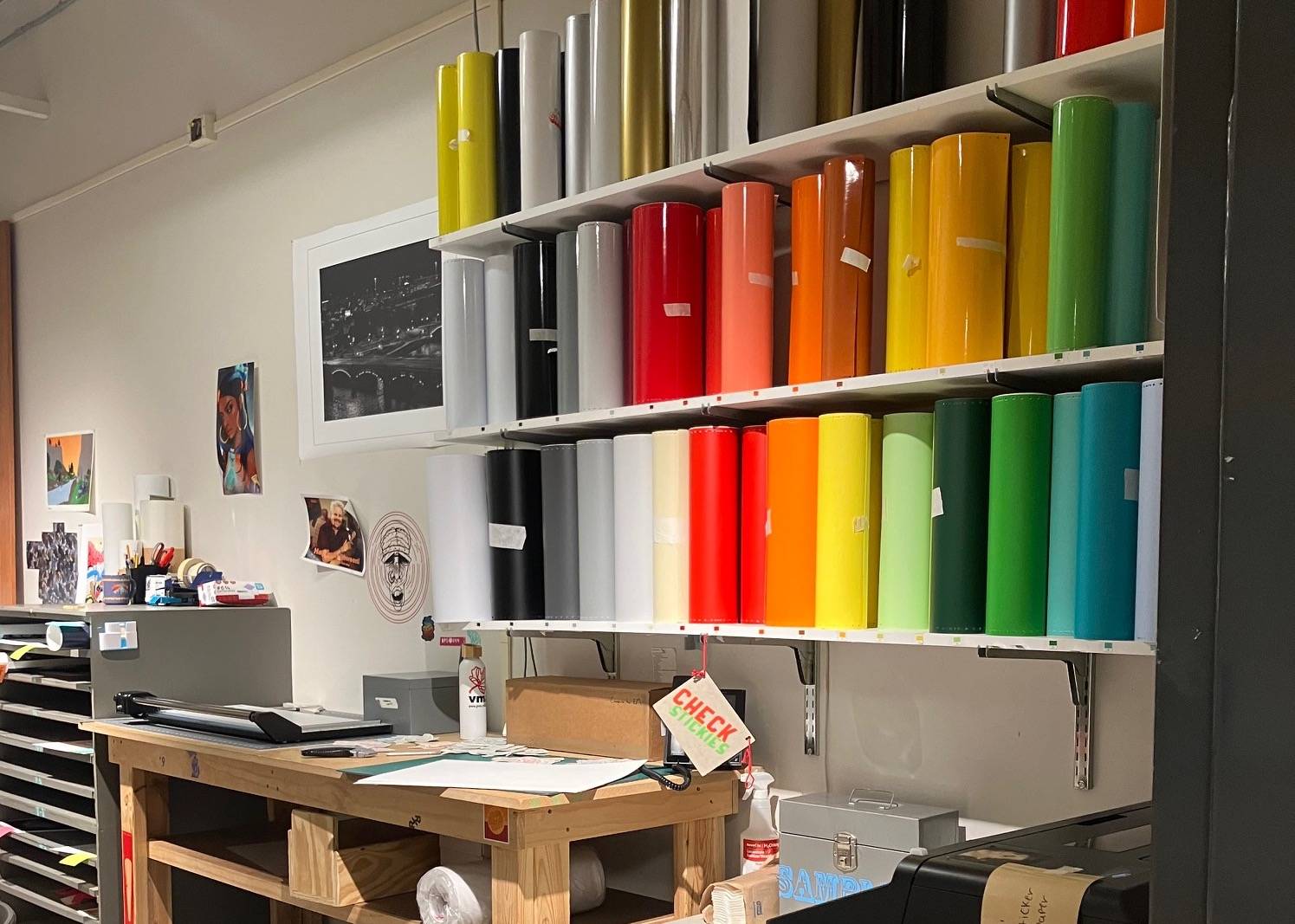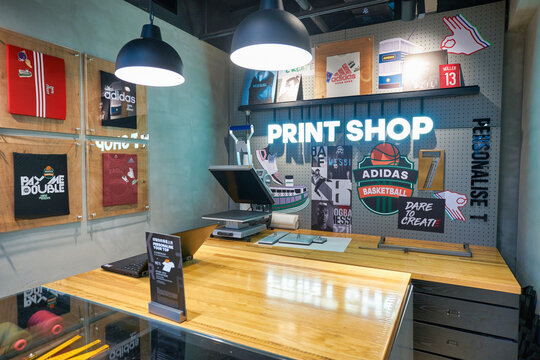The Ultimate Overview to Using Printing Solutions for Personalized Art Prints
Steering via the globe of customized art prints needs a clear understanding of various printing services. Artists must think about elements such as printing methods and products to accomplish the desired outcome. Each decision, from artwork preparation to shade calibration, plays an essential function in the last item. As they check out these elements, musicians can expose the capacity for their job to get in touch with audiences in a purposeful method. What steps can they take to guarantee their prints stand out?
Recognizing Different Types of Printing Services
Although many individuals may forget the intricacies of printing services, understanding the numerous types offered is essential for any individual looking to produce personalized art prints. One of the most typical kinds include digital printing, offset printing, and screen printing. Digital printing is preferred for its fast turn-around and capacity to generate premium pictures straight from electronic files, making it optimal for tiny runs. In contrast, countered printing deals superior photo high quality and is cost-effective for bigger amounts, using plates to move ink onto paper. Display printing, usually used for fabrics and advertising products, entails pushing ink through a mesh screen, enabling lively shades and structures. Each technique has its distinct benefits and restrictions, making it crucial for artists and designers to assess their specific requirements, such as amount, desired top quality, and budget, prior to choosing a printing service that aligns with their imaginative vision.
Selecting the Right Materials for Your Prints
Choosing the ideal products is essential for accomplishing top notch personalized art prints. Recognizing the different types of paper and the relevance of ink quality can greatly influence the final result. Artists should think about these factors to assure their vision is precisely stood for in the published piece.
Paper Kind Explained
Picking the right paper type is necessary for accomplishing the wanted visual and durability in personalized art prints. Different alternatives exist, each offering distinctive features. For example, shiny paper enhances shade vibrancy and information, making it optimal for digital photography prints. Alternatively, matte paper gives a softer surface, which is more effective for art work that requires nuance and appearance. Fine art paper, often made from cotton or alpha cellulose, supplies archival top quality and is appropriate for replicating detailed details in paintings (Print Shop Near Me). Additionally, specialized papers, such as watercolor or canvas, can include unique visual effects. Eventually, choosing the proper paper type will considerably affect the last discussion, making sure that the artwork is both visually attractive and long-lasting
Ink High Quality Issues
Ink top quality plays a crucial duty in the general success of custom art prints. High-grade inks ensure vibrant shades, sharp information, and durability, which are essential for showcasing creative job. When picking printing services, artists must take into consideration pigment-based inks over dye-based alternatives, as they offer much better fade resistance and shade security. Additionally, the selection of ink must match the chosen paper type, boosting the print's visual impact. Ecological variables, such as humidity and temperature, can likewise influence ink efficiency; consequently, musicians need to make inquiries regarding ink solutions that resist these elements. Inevitably, purchasing premium ink quality can elevate the end product, guaranteeing that the art print holds to the musician's vision for several years to come.
Exploring Printing Techniques: Digital vs. Conventional
While both conventional and electronic printing strategies have their one-of-a-kind advantages, the choice on which approach to use frequently hinges on the certain demands of the art work. Digital printing succeeds in flexibility and speed, enabling quick turn-around times and the capacity to print as needed. This approach is especially useful for artists that need little runs or unique pieces, as it eliminates the requirement for comprehensive configuration processes.Conversely, standard printing techniques, such as lithography and screen printing, commonly produce richer textures and shades, attracting musicians seeking an extra tactile and genuine coating. These approaches can boost the deepness and top quality of the artwork, making them appropriate for larger editions. In addition, typical methods may provide an unique aesthetic that digital printing often struggles to replicate. Ultimately, the choice between these techniques ought to think about variables like wanted top quality, quantity, and imaginative intent, guiding musicians to the most appropriate alternative for their tasks.

Preparing Your Art Work for Printing
Successfully preparing art work for printing calls for mindful focus to information, no matter of the chosen printing strategy. Musicians need to assure that their data are developed at the ideal resolution, commonly 300 DPI, to maintain intensity and clearness. The right shade setting, generally CMYK for print, is essential to attain the desired shade accuracy. Artists need to additionally think about the dimensions of the artwork, making certain to include hemorrhage locations if needed, to avoid any undesirable white edges after trimming.Additionally, data layouts play a vital duty; read the full info here TIFF and PDF are usually favored for top quality prints. Prior to submission, it is very important to evaluate the artwork for any flaws or unwanted components. By carefully inspecting these aspects, musicians can improve the probability of their prints straightening with their innovative vision, eventually bring about an effective printing result.
The Relevance of Shade Calibration and Proofing
Shade calibration and proofing are essential action in the printing process, as they guarantee that the final output properly shows the artist's vision. Proper shade calibration assurances that the colors showed on the screen suit those that will certainly be printed. This process involves readjusting the display setups, printer profiles, and inks to accomplish a constant color representation.Additionally, proofing permits artists to preview their work prior to the last print run. This stage allows them to discover and rectify any kind of discrepancies in detail, color, or saturation, therefore reducing pricey errors. By utilizing hard-copy or digital evidence, artists can make enlightened choices regarding changes needed for perfect results.Incorporating color calibration and proofing into the printing operations not just enhances the quality of the end product yet also fosters a dependable collaboration between the printing and the musician solution, assuring contentment and fidelity to the initial artwork.
Choosing the Perfect Dimension and Format for Your Prints

Marketing and Selling Your Customized Art Prints
Advertising and marketing and offering custom art prints calls for a solid brand identification to stick out in an open market. Reliable on-line promo techniques and the strategic use social networks platforms can considerably boost exposure and interaction. By integrating these components, artists can develop a compelling existence that draws in prospective purchasers.
Building Your Brand Name Identity
Establishing a strong brand name identity is crucial for artists looking to efficiently market and sell their customized art prints. This identity encompasses the artist's special design, worths, and story, which reverberate with possible purchasers. Artists need to produce a cohesive visual presence throughout all platforms, consisting of logo designs, color pattern, and typography that mirror their imaginative vision. Furthermore, a clear objective statement assists connect the musician's purpose and passion. Involving storytelling regarding the motivation behind each item can promote psychological connections with the audience. Uniformity in messaging, whether on social media or product packaging, improves acknowledgment and count on. By other very carefully curating their brand name identification, artists can differentiate themselves in an open market, drawing in dedicated consumers that appreciate their creativity.
Reliable Online Promo Approaches
What methods can musicians use to efficiently advertise their personalized art publishes online? Establishing a professional website showcasing the artwork is important. This site must include top notch images and detailed descriptions to engage potential customers. Additionally, artists can utilize e-mail advertising by constructing a customer listing to share updates, promotions, and new launches. Collaborating with blog writers and influencers in the art neighborhood can broaden reach and integrity. Using limited-time discount rates or exclusive items can also develop seriousness, motivating purchases. Additionally, maximizing content for search engines through pertinent key phrases will certainly enhance exposure. Maintaining a blog site about the creative process can bring in art lovers, fostering a deeper link with the audience and boosting the general advertising technique.
Using Social Media Site Operatings Systems
Social media site systems act as powerful tools for musicians wanting to market and market their custom-made art prints. By leveraging systems like Instagram, Facebook, and Pinterest, artists can display their work to a substantial target market. Engaging visuals and tactical hashtags can boost exposure, attracting possible customers to their accounts. Regularly publishing content, such as behind the curtain procedures or brand-new styles, aids keep target market passion and fosters a feeling of neighborhood. Furthermore, artists can use targeted marketing to Read Full Report reach particular demographics, improving the chances of sales. Collaborations with influencers or other musicians can further magnify direct exposure. Inevitably, a well-curated social media presence not only advertises custom art prints but likewise develops a faithful consumer base in time.
Frequently Asked Concerns

Exactly how Do I Discover Reputable Printing Service Providers?
To locate reputable printing company, one ought to look into on the internet testimonials, look for suggestions from peers, contrast profiles, request samples, and examine client service responsiveness. This complete strategy guarantees educated choices and satisfactory outcomes.
What Is the Common Turnaround Time for Customized Prints?
The regular turn-around time for custom prints varies by provider, but typically varies from a couple of days to 2 weeks. Elements influencing this consist of order size, complexity, and the certain printing strategies utilized.
Can I Get a Refund if I'm Not Satisfied With My Prints?
The question of getting a refund for unsatisfactory prints frequently depends on the specific printing service's plans. Several companies use fulfillment assurances, while others might have strict return conditions, highlighting the importance of assessing terms beforehand.
Are There Any Kind Of Hidden Costs Related To Printing Solutions?
Several printing services might consist of surprise expenses such as configuration fees, delivery costs, or service charges for details materials. It's important for customers to ask about all possible expenditures prior to settling their order.
Just How Can I Guarantee My Prints Are Ecologically Friendly?
To guarantee prints are eco-friendly, one need to pick eco-friendly inks, recycled paper, and lasting printing methods. Researching printing services that focus on sustainability and acquiring qualifications can even more ensure very little environmental effect in the printing process. Guiding through the globe of customized art prints calls for a clear understanding of different printing services. Several people may neglect the complexities of printing services, understanding the different types offered is important for anyone looking to create personalized art prints. The most typical kinds include electronic printing, counter printing, and display printing. Efficiently preparing artwork for printing requires cautious focus to detail, no matter of the selected printing method. Prints intended at galleries might call for common sizes to promote framing, whereas one-of-a-kind layouts may appeal to collection agencies looking for something distinctive.Lastly, the printing service's abilities should be assessed.
Comments on “Exploring Printing Materials: What a Print Shop Near Me Can Offer”